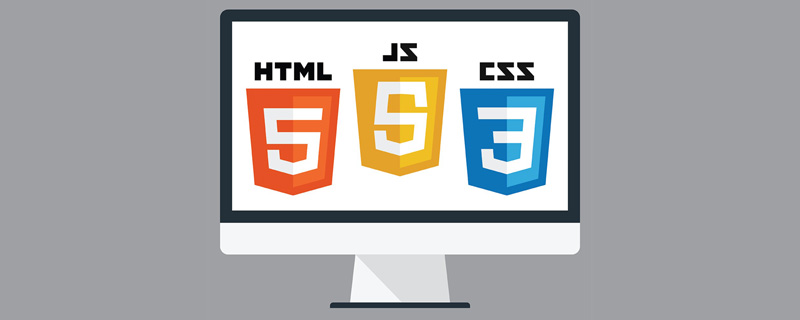Before you start tinkering with code, you should understand the purpose and benefits of using inheritance. Generally speaking, when designing classes, we hope to reduce repetitive code and try to weaken the coupling between classes. It is difficult to balance both. We need to decide what method we should take based on specific conditions and circumstances. According to our understanding of inheritance in object-oriented languages, inheritance will bring direct strong coupling of classes, but due to its unique flexibility, js can design codes with strong coupling and weak coupling, high efficiency and low efficiency. What to use depends on the situation.
The following are three ways to implement inheritance in js: class inheritance, prototypal inheritance, and metaclasses. Class inheritance will be briefly described here first, and the last two will be briefly described later. Please pay more attention and guidance, thank you.
Classic inheritance.
The implementation of js class inheritance relies on the prototype chain. What is a prototype chain? Objects in js have an attribute called prototype. This attribute returns a reference to the object type and is used to provide a set of basic functions of the object's class.
It seems that I have an impression of prototype. By the way, we often use code like this.
var Person = function(){
this. name = "liyatang";
};
Person.prototype = {
//The basic functions of Person can be provided here
getName: function(){
return this.name;
}
}
We put the basic functions of the class in the prototype attribute, indicating that the reference to the Person object has XXX functions.
After understanding prototypes, you need to understand what a prototype chain is. When accessing a member (property or method) of an object, if this member is not found in the current object, js will search for it in the object pointed to by the prototype attribute. If it is not found yet, it will continue to the next-level prototype. Search the pointed object until it is found. If not found, undefined will be returned.
So what hints does the prototype chain give us? It is easy to think that the prototype chain means that for one class to inherit another class, you only need to set the prototype of the subclass to point to an instance of the parent class. This binds the members of the parent class to the child class, because if a member cannot be found in the child class, it will be searched in the parent class. (The wording in the above two paragraphs is not rigorous, just describing it in easy-to-understand terms)
Next we need a Chinese class, which needs to inherit the name and getName members of the Person class.
var Chinese = function(name, nation){
//Inheritance, you need to call the constructor of the parent class, which can be called with call, this points to Chinese
//Only when Person is in this scope can you call members of Person
Person.call(this,name );
this.nation = nation;
};
Chinese.prototype = Person.prototype;
//This cannot be the same as before, because the prototype attribute is overwritten
//Chinese .prototype = {
// getNation : function(){
// return this.nation;
// }
//};
//All subsequent methods need to be added like this
Chinese.prototype.getNation = function(){
return this.nation;
};
The inheritance relationship is established, we call it like this
var c = new Chinese("liyatang","China ");
alert(c.getName());// liyatang
So class inheritance is completed. Is it really completed? Use firebug to set a breakpoint in alert, and you will find that the original Person.prototype has been modified and the getNation method has been added. 
This is because in the above code Chinese.prototype = Person.prototype; this is a reference type. Modifying Chinese also modifies Person. This in itself is intolerable and creates strong coupling between classes. This is not the effect we want.
We can create a new object or instantiate an instance to weaken coupling.
//First type
//Chinese. prototype = new Person();
//Second type
//var F = function(){};
//F.prototype = Person.prototype;
//Chinese.prototype = F.prototype;
What is the difference between these two methods. In the second type, an empty function F is added. This can avoid creating an instance of the parent class, because the parent class may be relatively large, and the constructor of the parent class will have some side effects or perform a large amount of calculations. Task. Therefore, we strongly recommend the second method.
This is it, it’s over, not yet! There is an attribute constructor under the object's prototype attribute, which holds a reference to the function that constructs a specific object instance. According to this statement Chiese.prototype.constructor should be equal to Chinese, but it is not.
Recall that when setting up the prototype chain of Chiese, we overwrote Chiese.prototype with Person.prototype. So the Chiese.prototype.constructor at this time is Person. We also need to add the following code
//You don’t need to study the if condition here in detail, you know Just Chinese.prototype.constructor = Chinese
if(Chinese.prototype.constructor == Object.prototype.constructor){
Chinese.prototype.constructor = Chinese;
}
Organize all the codes as follows
var Person = function( name){
this.name = name;
};
Person.prototype = {
getName : function(){
return this.name;
}
} ;
var Chinese = function(name, nation){
Person.call(this,name);
this.nation = nation;
};
var F = function (){};
F.prototype = Person.prototype;
Chinese.prototype = F.prototype;
if(Chinese.prototype.constructor == Object.prototype.constructor){
Chinese .prototype.constructor = Chinese;
}
Chinese.prototype.getNation = function(){
return this.nation;
};
var c = new Chinese(" liyatang","China");
alert(c.getName());
If you can put the inherited code in a function to facilitate code reuse, the final code is organized as follows
function extend(subClass,superClass){
var F = function(){};
F.prototype = superClass.prototype;
subClass.prototype = new F();
subClass.prototype.constructor = subClass;
subClass.superclass = superClass .prototype; //Add an extra attribute to point to the parent class itself in order to call the parent class function
if(superClass.prototype.constructor == Object.prototype.constructor){
superClass.prototype.constructor = superClass;
}
}
var Person = function(name){
this.name = name;
};
Person.prototype = {
getName : function( ){
return this.name;
}
};
var Chinese = function(name, nation){
Person.call(this,name);
this.nation = nation;
};
extend(Chinese, Person);
Chinese.prototype.getNation = function(){
return this.nation;
};
var c = new Chinese("liyatang","China");
alert(c.getName());
Revised after publishing:
Under the comments on the first floor, I have new views on the extend function. Two methods were proposed before when discussing how to set up the prototype chain
//First type
//Chinese. prototype = new Person();
//Second type
//var F = function(){};
//F.prototype = Person.prototype;
//Chinese.prototype = F.prototype;
Although the second method reduces the need to call the constructor of the parent class, Person.call(this,name) was used when designing the Chinese class; this is also equivalent to calling the constructor of the parent class.
However, using the first method can reduce the need to write Person.call(this,name); in Chinese. This part of the code is often forgotten in subclasses. You might as well put this functional code in extend. Just write
Chinese.prototype = new Person(); also achieves the same purpose: the coupling is not strong.
But the forgotten thing is that Chinese.prototype = new Person(); is written correctly. The answer is no! Obviously new Person() needs to pass a name parameter. We can't do this part of the work in the extend function, so we have to call the constructor of the parent class in the Chinese class. This is also in line with object-oriented thinking.
So, it is still highly recommended to use the second method.
This is the first time I write a technical article like this. I basically develop it according to my own ideas. It is inevitable that there will be some places that have not been taken into consideration and unclear explanations. I hope to leave a message for feedback, thank you.
 如何使用JS和百度地图实现地图平移功能Nov 21, 2023 am 10:00 AM
如何使用JS和百度地图实现地图平移功能Nov 21, 2023 am 10:00 AM如何使用JS和百度地图实现地图平移功能百度地图是一款广泛使用的地图服务平台,在Web开发中经常用于展示地理信息、定位等功能。本文将介绍如何使用JS和百度地图API实现地图平移功能,并提供具体的代码示例。一、准备工作使用百度地图API前,首先需要在百度地图开放平台(http://lbsyun.baidu.com/)上申请一个开发者账号,并创建一个应用。创建完成
 如何使用JS和百度地图实现地图多边形绘制功能Nov 21, 2023 am 10:53 AM
如何使用JS和百度地图实现地图多边形绘制功能Nov 21, 2023 am 10:53 AM如何使用JS和百度地图实现地图多边形绘制功能在现代网页开发中,地图应用已经成为常见的功能之一。而地图上绘制多边形,可以帮助我们将特定区域进行标记,方便用户进行查看和分析。本文将介绍如何使用JS和百度地图API实现地图多边形绘制功能,并提供具体的代码示例。首先,我们需要引入百度地图API。可以利用以下代码在HTML文件中导入百度地图API的JavaScript
 js字符串转数组Aug 03, 2023 pm 01:34 PM
js字符串转数组Aug 03, 2023 pm 01:34 PMjs字符串转数组的方法:1、使用“split()”方法,可以根据指定的分隔符将字符串分割成数组元素;2、使用“Array.from()”方法,可以将可迭代对象或类数组对象转换成真正的数组;3、使用for循环遍历,将每个字符依次添加到数组中;4、使用“Array.split()”方法,通过调用“Array.prototype.forEach()”将一个字符串拆分成数组的快捷方式。
 如何使用JS和百度地图实现地图热力图功能Nov 21, 2023 am 09:33 AM
如何使用JS和百度地图实现地图热力图功能Nov 21, 2023 am 09:33 AM如何使用JS和百度地图实现地图热力图功能简介:随着互联网和移动设备的迅速发展,地图成为了一种普遍的应用场景。而热力图作为一种可视化的展示方式,能够帮助我们更直观地了解数据的分布情况。本文将介绍如何使用JS和百度地图API来实现地图热力图的功能,并提供具体的代码示例。准备工作:在开始之前,你需要准备以下事项:一个百度开发者账号,并创建一个应用,获取到相应的AP
 js中new操作符做了哪些事情Nov 13, 2023 pm 04:05 PM
js中new操作符做了哪些事情Nov 13, 2023 pm 04:05 PMjs中new操作符做了:1、创建一个空对象,这个新对象将成为函数的实例;2、将新对象的原型链接到构造函数的原型对象,这样新对象就可以访问构造函数原型对象中定义的属性和方法;3、将构造函数的作用域赋给新对象,这样新对象就可以通过this关键字来引用构造函数中的属性和方法;4、执行构造函数中的代码,构造函数中的代码将用于初始化新对象的属性和方法;5、如果构造函数中没有返回等等。
 用JavaScript模拟实现打字小游戏!Aug 07, 2022 am 10:34 AM
用JavaScript模拟实现打字小游戏!Aug 07, 2022 am 10:34 AM这篇文章主要为大家详细介绍了js实现打字小游戏,文中示例代码介绍的非常详细,具有一定的参考价值,感兴趣的小伙伴们可以参考一下。
 php可以读js内部的数组吗Jul 12, 2023 pm 03:41 PM
php可以读js内部的数组吗Jul 12, 2023 pm 03:41 PMphp在特定情况下可以读js内部的数组。其方法是:1、在JavaScript中,创建一个包含需要传递给PHP的数组的变量;2、使用Ajax技术将该数组发送给PHP脚本。可以使用原生的JavaScript代码或者使用基于Ajax的JavaScript库如jQuery等;3、在PHP脚本中,接收传递过来的数组数据,并进行相应的处理即可。
 js是什么编程语言?May 05, 2019 am 10:22 AM
js是什么编程语言?May 05, 2019 am 10:22 AMjs全称JavaScript,是一种具有函数优先的轻量级,直译式、解释型或即时编译型的高级编程语言,是一种属于网络的高级脚本语言;JavaScript基于原型编程、多范式的动态脚本语言,并且支持面向对象、命令式和声明式,如函数式编程。


Hot AI Tools

Undresser.AI Undress
AI-powered app for creating realistic nude photos

AI Clothes Remover
Online AI tool for removing clothes from photos.

Undress AI Tool
Undress images for free

Clothoff.io
AI clothes remover

AI Hentai Generator
Generate AI Hentai for free.

Hot Article

Hot Tools

Zend Studio 13.0.1
Powerful PHP integrated development environment

EditPlus Chinese cracked version
Small size, syntax highlighting, does not support code prompt function

Dreamweaver Mac version
Visual web development tools

Atom editor mac version download
The most popular open source editor

mPDF
mPDF is a PHP library that can generate PDF files from UTF-8 encoded HTML. The original author, Ian Back, wrote mPDF to output PDF files "on the fly" from his website and handle different languages. It is slower than original scripts like HTML2FPDF and produces larger files when using Unicode fonts, but supports CSS styles etc. and has a lot of enhancements. Supports almost all languages, including RTL (Arabic and Hebrew) and CJK (Chinese, Japanese and Korean). Supports nested block-level elements (such as P, DIV),






